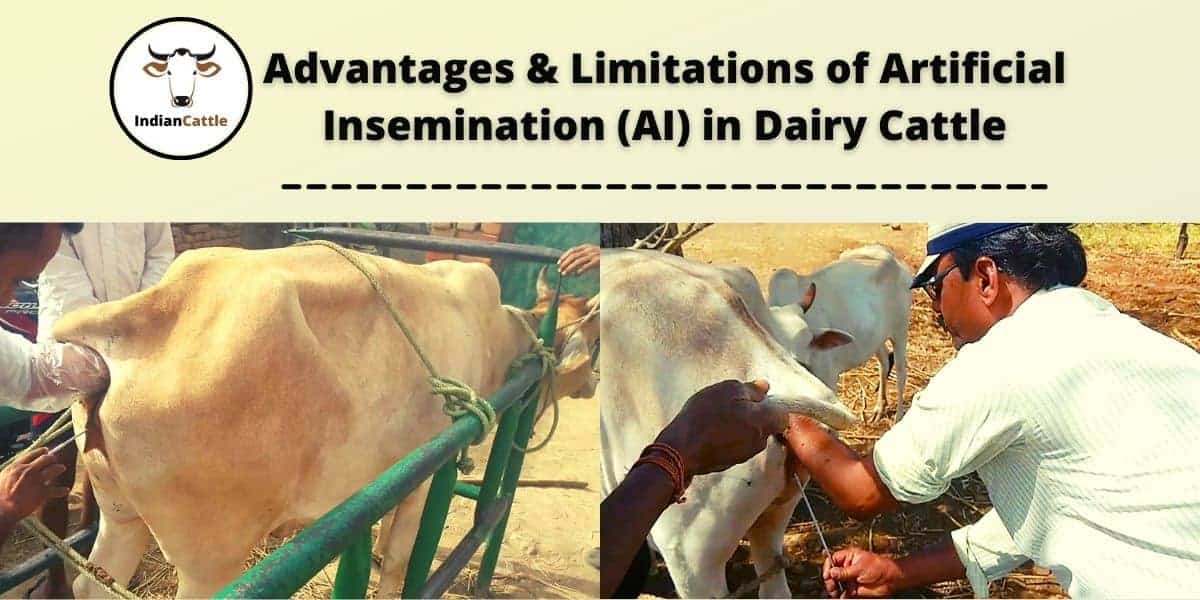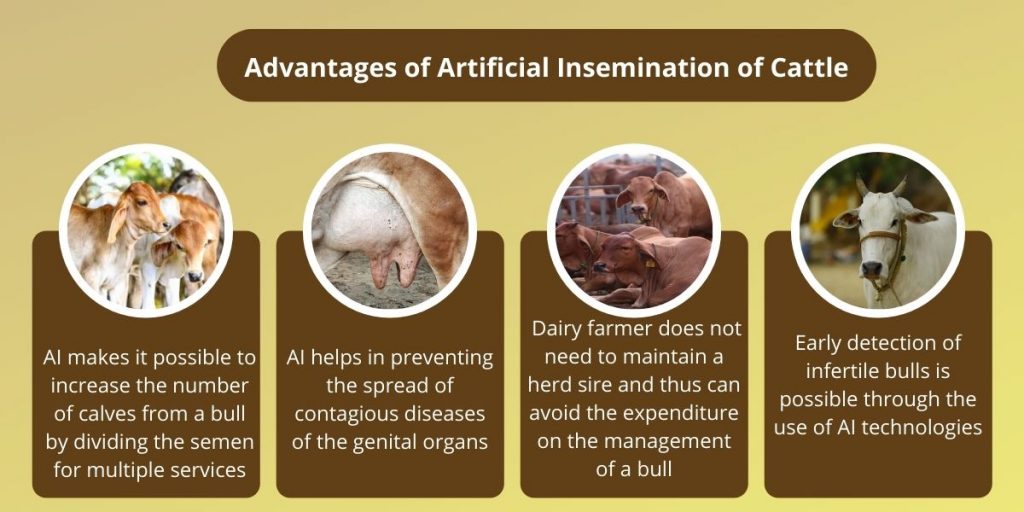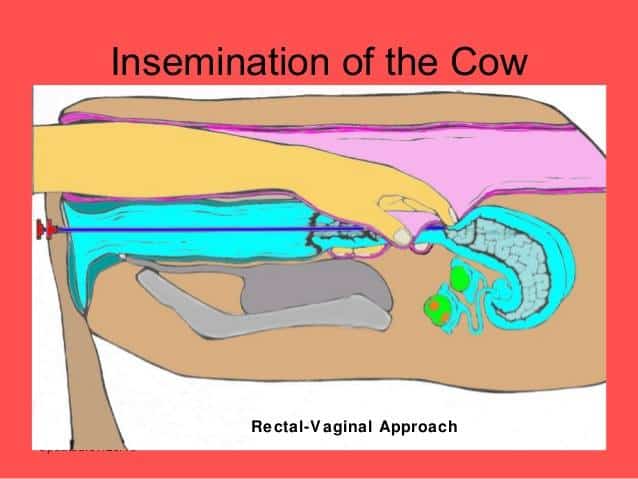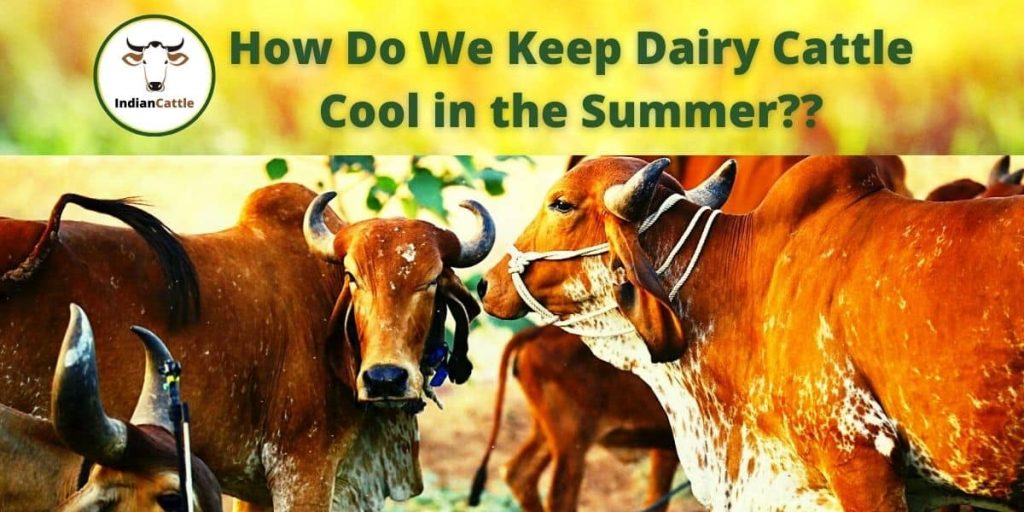
Advantages & Limitations of Artificial Insemination (AI) in Dairy Cattle
Artificial Insemination of Cattle
The technique of Artificial Insemination of Cattle is very useful in a country like India where the lack of quality males (sires) has been the main hurdle in the way of cattle improvement. It is the technique in which semen from elite males is collected and introduced into the female reproductive tract artificially. AI has the potential for rapid and economical dissemination of elite male genetic material to a large number of females in a short duration of time over a large geographical area. During AI, the semen is introduced into the female reproductive tract (cervix or uterus) by a mechanical method with the aid of an AI gun under hygienic conditions.
However, the success of AI technology depends largely upon accurate heat detection, timely insemination, and certification about the optimum fertility status of bulls. The use of AI technology is still more generally associated with dairy cattle and buffaloes than with other domesticated livestock species in India. AI, as it is popularly called, has become a very popular tool for animal reproduction not only to bring out better breeds but also to serve those remote areas where either the bull cannot be maintained or such bull cannot be taken. With the help of artificial Insemination Karan Swiss and Karan Fries cross breed cattle were developed in India at the National Dairy Research Institute, Karnal.
Karan Swiss is a high-yielding cross between exotic cattle Brown Swiss and zebu cattle Sahiwal. However, a cross between exotic cattle Holstein Friesian and zebu cattle Tharparkar resulted in Karan Fries. The increased milk productions from these breeds have revolutionized the Indian dairy industry. Artificial insemination has proven to be very effective for the improvement of the genetic potential of animals for higher production and there is no surprise why today AI is the backbone of all breeding programs in India. In commercial dairy production, over 80% of all cattle are now bred artificially. The success of dairy producers in improving milk production has been impressive. A large proportion of the success is due to the improvement of the genetic potential of dairy cattle through the use of outstanding sires by artificial insemination.
Advantages of Artificial Insemination of Cattle

There are many advantages of artificial insemination in various kinds of livestock, only those that primarily apply to cattle are discussed below:
- The use of AI makes it possible to increase the number of calves from a bull by dividing the semen for multiple services. This is particularly important in the case of a valuable or proven bull and greatly enlarges his usefulness. It also will tend to prevent over-use of a valuable sire in a large herd.
- It helps in preventing the spread of contagious diseases of the genital organs, such as trichomoniasis by contact from one female to another utilizing the male. This becomes increasingly important when a male is used jointly by several breeders. The prevalence of trichomoniasis is worldwide and the losses resulting from it are enormous. Thus, artificial insemination will prevent the spread of many such diseases.
- Wider and rapid use of selected males through AI will accelerate the rate of genetic improvement.
- AI makes possible the obtaining of semen from a proven bull that has little or no sexual desire or that is physically incapable of service.
- The mating of animals of different sizes is possible without difficulty.
- AI provides an easy way of determining the character of the semen sample before service since as a part of the procedure of AI the semen is usually examined for the activity and normality of the sperm. Thus, any characteristics that the semen would tend to affect conception will be known before service.
- The mating of cows over a wide geographical area becomes possible if it is possible to store semen for reasonably long periods.
- AI increases the usefulness of superior sire. It makes available superior sires having an inheritance for milk and butterfat production to all dairymen within a specified area. Previously only a few could get the advantage of good bulls.
- The services of superior sires are greatly extended. By natural services, a bull can be bred to 50 to 60 cows per year. On the other hand, by artificial insemination techniques, thousands of cows can be sired in one year by one bull.
- The dairy farmer does not need to maintain a herd sire and thus can avoid the expenditure on the management of a bull.
- The dairyman does not have the problem of searching and purchasing a new herd sire every two years to avoid inbreeding.
- The technique of AI can be made useful in crossbreeding for hybrid vigor by quickly transporting the semen by air to different continents.
- Early detection of infertile bulls is possible through the use of AI technologies.

Disadvantages of Artificial Insemination
Despite several advantages over natural breeding processes, artificial insemination has certain limitations.
- It requires well-trained operators and special equipment.
- It necessitates the knowledge of the structure and function of reproduction on the part of the operator.
- Improper cleaning of the instruments and unhygienic conditions may lead to lower fertility.
- The market for the bulls is reduced while that for the superior germplasm is increased.
- The selection of the sire should be very rigid in all respect.
- Preservation and transportation of semen are difficult under severe climatic conditions like those prevailing in most parts of India.
- AI requires more labor and infrastructure facilities.
Thus, it can be concluded from the above discussion that AI is a useful technique for increasing the productivity of indigenous animals but its use injudicious and efficient manner is necessary for the well-being of farmers in our country.
Read More: Summer Management of Dairy Cattle in India
Dr. Rajesh Kumar Singh
Jamshedpur, Jharkhand, India
Mob No: 9431309542
Email ID: rajeshsinghvet@gmail.com

